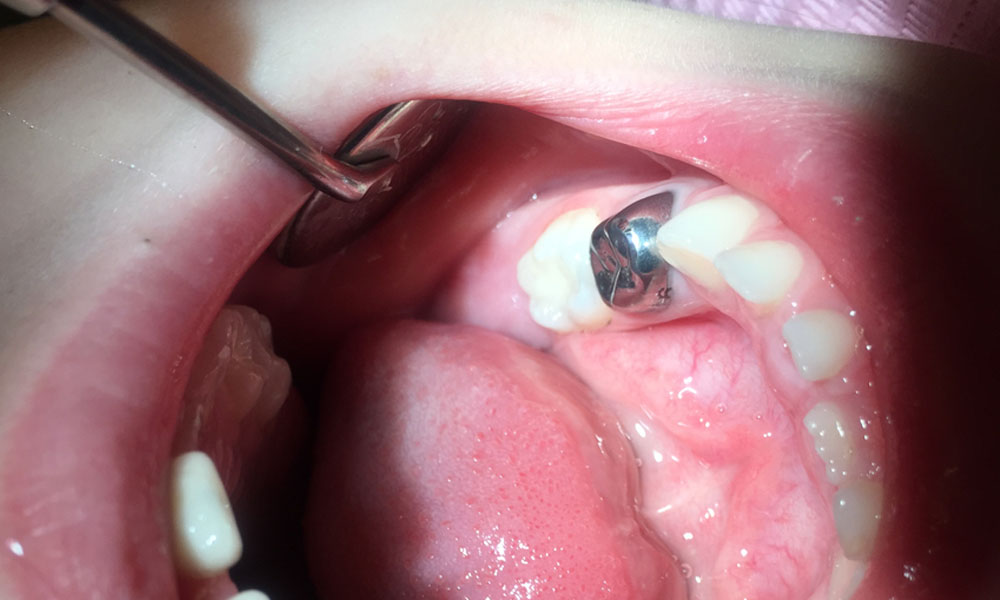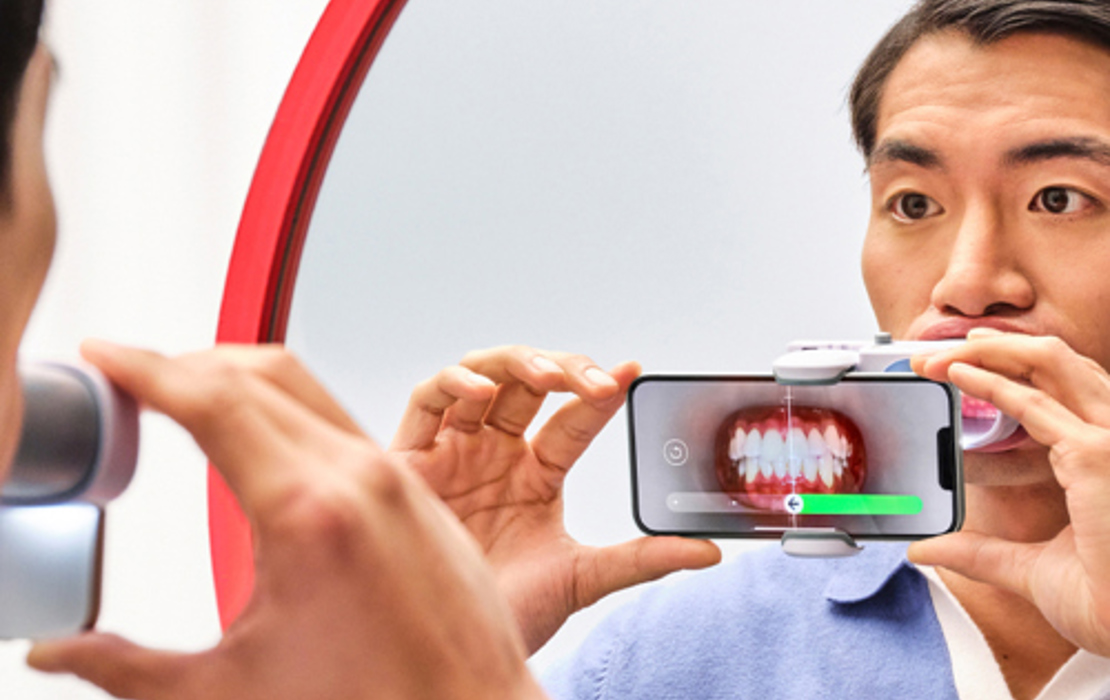The Hall Technique for Modern Pediatric Caries Management

The Evidence
Modern concepts for caries management aim to avoid invasive procedures whenever possible, and instead control the activity of the biofilm and lesions. When a caries lesion remains sealed from cariogenic biofilm, the prognosis is good for it to arrest, and odontoblasts form reparative dentin further protecting the pulp. The Hall Technique (HT) is one such method of sealing cariogenic lesions in primary molars within a preformed metal crown (PMC) without removal of tooth structure.ii Multiple randomized control trials and systematic reviews have demonstrated the efficacy of HT for the restoration of primary teeth, with clinical outcomes similar to or better than conventional restorations.iii,iv,v,vi,vii,viii,ix,x,xi,xii,xiii HT is well tolerated by the majority of children and acceptable to their parents.xii HT is particularly advantageous for young, apprehensive patients, who may otherwise require sedation for traditional surgical interventions.
The American Dental Association released an evidence-based clinical practice guideline on restorative treatments for caries lesions in July of 2023 which shed light on the benefits of more conservative caries removal approaches in vital teeth.xiv A key finding for advanced lesions was that more conservative caries tissue removal (CTR) approaches were associated with fewer clinical failures. The ADA restorative guideline supports selective, step-wise, and no CTR in vital primary teeth with moderate and advanced caries lesions, including PMCs placed utilizing HT.
Adoption and Utilization
While considered standard of care in the United Kingdom for more than a decade, HT was initially met with harsh criticism in the United States. Various editorial-style articles lashed out at this nonsurgical approach, demonstrating that the HT critics were likely unaware of the body of clinical evidence to support its efficacy.xv,xvi The COVID19 pandemic became a tipping point for awareness and adoption of HT in the US thanks to it being a non-aerosol treatment option, the serendipitous timing of pro-HT content, and virtual continuing education courses on HT viewed by thousands of providers during forced clinic closures to non-urgent care.xvii US based pediatric residency programs are increasing the teaching and utilization of nonsurgical caries management techniques. A 2020 survey of pediatric dentistry residency program directors revealed that 90.2% were teaching Hall Technique didactically and 69.1% were utilizing it clinically, in striking contrast to a 2015 version of the survey which did not include HT.xviii
Clinical Protocol
While HT does not require administration of local anesthetic or removal of tooth structure, it does require proper case selection, accurate pulpal assessment, excellent behavior management skills, and careful selection, sizing, and placement of the PMC. As with any restorative procedure, HT should be part of a comprehensive and continuous caries prevention and management care plan.
Indications:
-
- Primary molars with asymptomatic caries or reversible pulpitis
- Proximal lesions, cavitated or non-cavitated
- Occlusal lesions, cavitated if the child is unable to accept selective caries removal
- Large, multi-surface lesions
- Lesions involving cusps or extending beyond proximal line angles
- Patient cannot tolerate conventional surgical interventions
- Parent or patient prefers less invasive treatment
Contraindications:
-
- Clinical symptoms of irreversible pulpitis or dental abscess
- No clear band of dentin between the carious lesion and the pulp
- Radiographic evidence of pulpal exposure or periradicular pathology
- Unrestorable, inadequate tooth structure for crown retention
- Children where the airway cannot be managed safely
The Procedure:
-
- Place orthodontic separators into the mesial and distal contacts to create space for the crown. You may use orthodontic pliers or thread 2 pieces of floss through the separator, pull them in opposite directions to stretch the band, and then slide it into the contact. (Note – if the patient has open contacts and/or primate space, it may not be necessary to place separators)
- After approximately 2 days to one week, remove the separators and clean the tooth with plain pumice, then rinse.
- Protect the patient’s airway by seating slightly upwards, drape a 4x4 gauze across the back of their throat, and/or use a rolled piece of adhesive medical tape to adhere the PMC to your gloved finger.
- Select the crown and crimp/adjust as needed to have a “snap” fit and good marginal adaptation. Ensure the carious lesion is completely sealed within the PMC, open margins can lead to failure.
- Fill the crown with a high quality glass ionomer or resin modified glass ionomer cement.

- Seat the PMC with firm finger pressure or use a bite stick and/or have the patient help by biting down firmly on a cotton roll.

- Clean the excess cement with wet gauze, then water spray, and finally floss the contacts.

- The patient’s bite may be slightly opened by approximately 1mm and will self-adjust over the next 1-2 weeks via intrusion of the crowned tooth and opposing tooth, as well as super-eruption of the adjacent teeth.xii,xix,xx,xxi

Looking Forward
With the new ADA restorative guidelines, evolving pre and postdoctoral dental curriculums, increasing awareness through continuing education and dental literature, HT will likely continue to increase in adoption and utilization among US dental practitioners. For pediatric patients and our strained Medicaid system, HT will help improve oral health, improve clinical outcomes, improve the patient experience, increase access to care, and reduce treatment cost. Hall Technique is a welcome addition to our restorative repertoire.
About the Author
Dr. Jeanette MacLean is a board certified pediatric dentist, speaker, and private practice owner of Affiliated Children’s Dental Specialists in Glendale, AZ. Kidsteethandbraces.com
References:
iSchwendicke F. Contemporary concepts in carious tissue removal: A review. J Esthet Restor Dent. 2017 Nov 12;29(6):403-408.
iiInnes NP, Evans DJ, Bonifacio CC, Geneser M, Hesse D, Heimer M, Kanellis M, Machiulskiene V, Narbutaité J, Olegário IC, Owais A, Araujo MP, Raggio DP, Splieth C, van Amerongen E, Weber-Gasparoni K, Santamaria RM. The Hall Technique 10 years on: Questions and answers. Br Dent J. 2017 Mar 24;222(6):478-483.
iiiInnes N P, Evans D J P, Stirrups DR. Sealing caries in primary molars; randomized control trial, 5 year results. J Dent Res 2011; 90: 1405-1410.
ivSantamaria R M, Innes N P T, Machiulskiene V, Evans D J P, Splieth C H. Caries management strategies for primary molars: 1yr randomized control trial results. J Dent Res 2014; 93: 1062–1069.
vNarbutaite J, Maciulskiene V, Splieth C H, Innes N P T, Santamaria R M. Acceptability of three different caries treatment methods for primary molars among Lithuanian children. 12th Congress of the European Academy of Paediatric Dentistry ‘A passion for Paediatric Dentistry’
viAraujo MP, Olegario IC, Hesse D, Innes NP, Bonifacio CC, Raggio DP. ART versus Hall Technique in Primary Molars: 1-Year Survival and Cost Analysis of a RCT ORCA Abstract number 86. Caries Res 2017;51:330
viiBadar SB, Tabassum S, Khan FR, Ghafoor R. Effectiveness of Hall Technique for Primary Carious Molars: A Systematic Review and Meta-analysis. Int J Clin Pediatr Dent. 2019 Sep-Oct;12(5):445-452.
viiiHu S, BaniHani A, Nevitt S, Maden M, Santamaria RM, Albadri S. Hall technique for primary teeth: A systematic review and meta-analysis. Jpn Dent Sci Rev. 2022 Nov;58:286-297.
ixKaptan A, Korkmaz E. Evaluation of success of stainless steel crowns placed using the hall technique in children with high caries risk: A randomized clinical trial. Niger J Clin Pract. 2021 Mar;24(3):425-434.
xElamin F, Abdelazeem N, Salah I, Mirghani Y, Wong F. A randomized clinical trial comparing Hall vs conventional technique in placing preformed metal crowns from Sudan. PLoS One. 2019 Jun 3;14(6):e0217740.
xiAyedun OS, Oredugba FA, Sote EO. Comparison of the treatment outcomes of the conventional stainless steel crown restorations and the hall technique in the treatment of carious primary molars. Niger J Clin Pract. 2021 Apr;24(4):584-594.
xiiEbrahimi M, Shirazi AS, Afshari E. Success and Behavior During Atraumatic Restorative Treatment, the Hall Technique, and the Stainless Steel Crown Technique for Primary Molar Teeth. Pediatr Dent. 2020 May 15;42(3):187-192.
xiiiBoyd DH, Thomson WM, Leon de la Barra S, Fuge KN, van den Heever R, Butler BM, Leov F, Foster Page LA. A Primary Care Randomized Controlled Trial of Hall and Conventional Restorative Techniques. JDR Clin Trans Res. 2021 Apr;6(2):205-212.
xivDhar V, Pilcher L, Fontana M, González-Cabezas C, Keels MA, Mascarenhas AK, Nascimento M, Platt JA, Sabino GJ, Slayton R, Tinanoff N, Young DA, Zero DT, Pahlke S, Urquhart O, O'Brien KK, Carrasco-Labra A. Evidence-based clinical practice guideline on restorative treatments for caries lesions: A report from the American Dental Association. J Am Dent Assoc. 2023 Jul;154(7):551-566.
xivCroll T, Killian C, Simonsen R, The Hall Technique: Serious Questions Remain; A hard look at the evidence base raises critical concerns. Inside Dentistry, July 2015, Vol. 11(7).
xvCroll T, Killian C, Simonsen R. Heal or Conceal: Judgment Time for the Hall Technique. Inside Dentistry, February 2017, Vol. 13(2).
xviiMacLean J. The Hall Technique. Dentaltown, March 2020.
xviiiCrystal YO, Janal MN, Yim S, Nelson T. Teaching and utilization of silver diamine fluoride and Hall-style crowns in US pediatric dentistry residency programs. J Am Dent Assoc. 2020 Oct;151(10):755-763.
xixVan der Zee V, van Amerongen W E. Influence of preformed metal crowns (Hall Technique) on the occlusal vertical dimension in the primary dentition. Eur Arch Pediatr Dent 2010; 11: 225-227.
xxSo D, Evans D J P, Borrie F et al, Measurement of Occlusal Equilibration Following Hall Crown Placement. J Dent Res 2015; 94 (Spec Iss A). Abstract No 0080; 2015. IADR, Boston, US.
xxiNair K, Chikkanarasaiah N, Poovani S, Thumati P. Digital occlusal analysis of vertical dimension and maximum intercuspal position after placement of stainless steel crown using hall technique in children. Int J Paediatr Dent. 2020 Nov;30(6):805-815.




